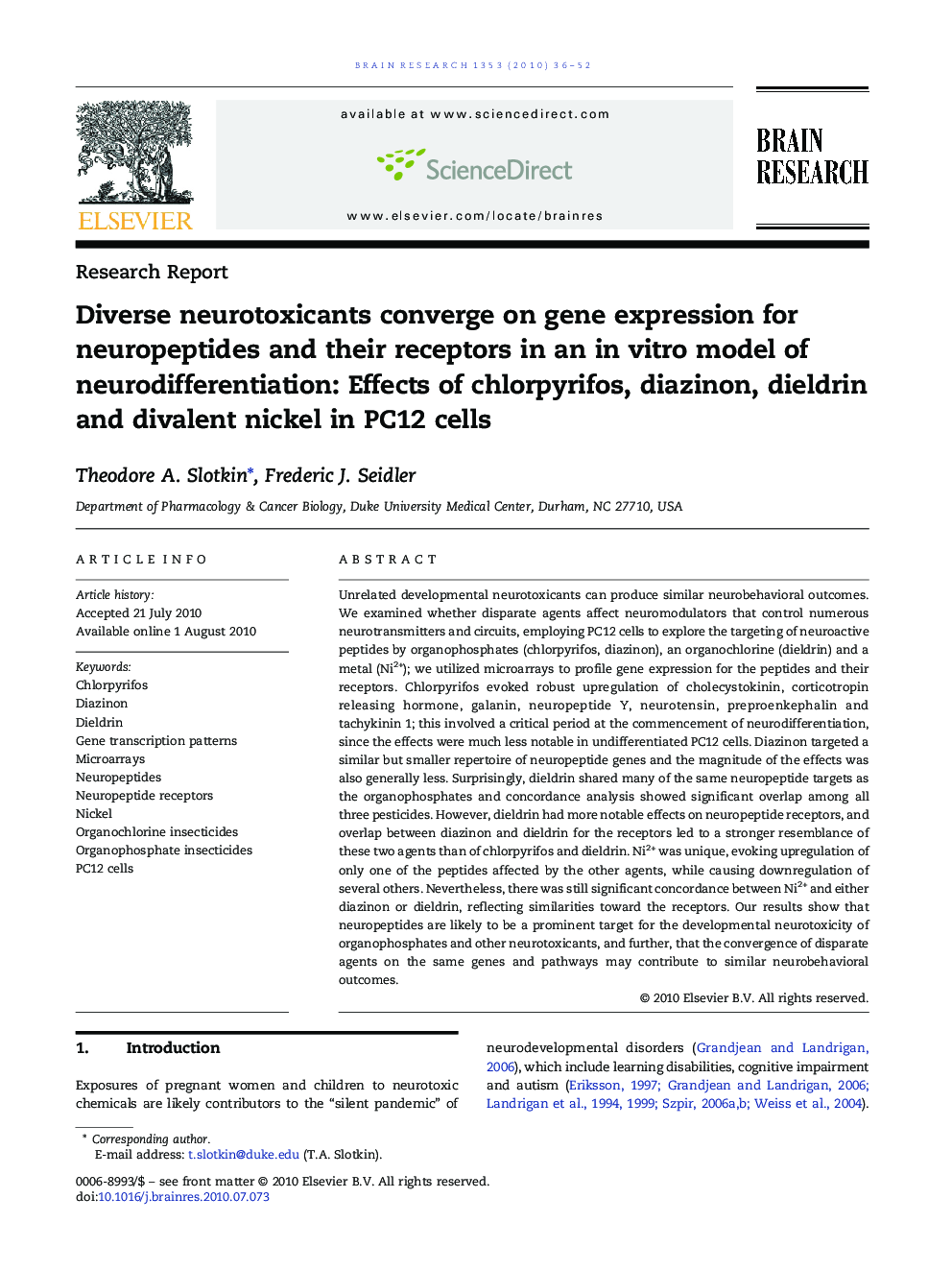| Article ID | Journal | Published Year | Pages | File Type |
|---|---|---|---|---|
| 4326513 | Brain Research | 2010 | 17 Pages |
Unrelated developmental neurotoxicants can produce similar neurobehavioral outcomes. We examined whether disparate agents affect neuromodulators that control numerous neurotransmitters and circuits, employing PC12 cells to explore the targeting of neuroactive peptides by organophosphates (chlorpyrifos, diazinon), an organochlorine (dieldrin) and a metal (Ni2+); we utilized microarrays to profile gene expression for the peptides and their receptors. Chlorpyrifos evoked robust upregulation of cholecystokinin, corticotropin releasing hormone, galanin, neuropeptide Y, neurotensin, preproenkephalin and tachykinin 1; this involved a critical period at the commencement of neurodifferentiation, since the effects were much less notable in undifferentiated PC12 cells. Diazinon targeted a similar but smaller repertoire of neuropeptide genes and the magnitude of the effects was also generally less. Surprisingly, dieldrin shared many of the same neuropeptide targets as the organophosphates and concordance analysis showed significant overlap among all three pesticides. However, dieldrin had more notable effects on neuropeptide receptors, and overlap between diazinon and dieldrin for the receptors led to a stronger resemblance of these two agents than of chlorpyrifos and dieldrin. Ni2+ was unique, evoking upregulation of only one of the peptides affected by the other agents, while causing downregulation of several others. Nevertheless, there was still significant concordance between Ni2+ and either diazinon or dieldrin, reflecting similarities toward the receptors. Our results show that neuropeptides are likely to be a prominent target for the developmental neurotoxicity of organophosphates and other neurotoxicants, and further, that the convergence of disparate agents on the same genes and pathways may contribute to similar neurobehavioral outcomes.
Research highlights► Developmental neurotoxicants target expression of neuropeptides and their receptors. ► Three peptides are particular sensitive to neurotoxicants: crh, npy, nts. ► Among organophosphate pesticides, chlorpyrifos is more active than diazinon. ► Otherwise unrelated neurotoxicants can converge on the same neuropeptides. ► Neuropeptide targets can explain how diverse toxicants can lead to the same outcome.
